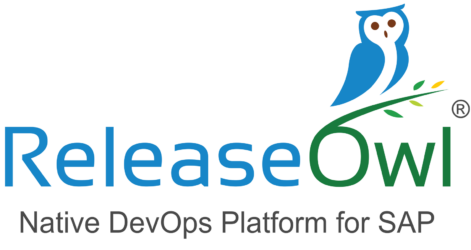SAP DMS
Filter By
Browse By
- SAP Analytics and AI
- SAP Application Development and Integration
- All SAP Application Development and Integration
- SAP ABAP
- SAP ABAP Development Tools
- SAP ABAP Test Cockpit
- SAP API Management
- SAP BAPI
- SAP Basis
- SAP BRF
- SAP Business Application Studio
- SAP CMS
- SAP Design Studio
- SAP Development Tools
- SAP DevOps
- SAP EAI
- SAP EDI
- SAP Extension Suite
- SAP Fiori
- SAP Fiori Elements
- SAP Integration Suite
- SAP Low Code Application Development
- SAP Low Code Automation
- SAP Netweaver
- SAP Release Management
- SAP UI5
- SAP Web Application Server
- SAP Web IDE
- SAP Business Process Management
- SAP Center of Excellence
- SAP CIO
- SAP Customer Experience
- SAP Data and Data Management
- All SAP Data and Data Management
- SAP BW
- SAP BW/4HANA
- SAP Crystal Reports
- SAP Data Archiving
- SAP Data Center
- SAP Data Governance
- SAP Data Integration
- SAP Data Migration
- SAP Data Quality
- SAP Data Services
- SAP Data Strategy
- SAP Data Visualization
- SAP Data Warehouse Cloud
- SAP DMS
- SAP Document Control
- SAP EIM
- SAP ETL
- SAP ETL Tools
- SAP HANA
- SAP HANA Administration
- SAP HANA Deployment Infrastructure
- SAP HANA Studio
- SAP Master Data
- SAP Master Data Governance
- SAP MDM
- SAP Enterprise Architect
- SAP Enterprise Asset Management
- SAP ERP
- SAP Finance
- All SAP Finance
- SAP Accounting
- SAP AR AP
- SAP Asset Accounting
- SAP Billing Systems
- SAP BPC
- SAP BRIM
- SAP Cash Management
- SAP Central Finance
- SAP Controlling
- SAP COPA
- SAP Cost Center Accounting
- SAP Currency Risk
- SAP e-invoicing
- SAP FICO
- SAP Finance Automation
- SAP Advanced Financial Closing
- SAP Financial Consolidation
- SAP Financial Planning
- SAP FX Risk
- SAP General Ledger
- SAP Global Tax Management
- SAP Hyperion
- SAP Order to Cash
- SAP Payment Processing
- SAP Profitability Analysis
- SAP Rebate Management
- SAP S/4HANA Finance
- SAP SWIFT Compliance
- SAP Treasury Management
- SAP Universal Journal
- SAP Governance Risk and Compliance
- SAP Human Capital Management
- SAP Intelligent Technologies
- SAP Platform and Technology
- All SAP Platform and Technology
- SAP Business Technology Platform
- SAP Cloud
- SAP Cloud Connector
- SAP Cloud Integration Platform
- SAP Cloud Migration
- SAP Cloud Platform
- SAP Cloud Providers
- SAP Cloud Strategy
- SAP Digital Signature
- SAP Container Platform
- SAP HANA Enterprise Cloud
- SAP Digital Asset Management
- SAP Smart Forms
- SAP HEC
- SAP Digital Integration Hub
- SAP Hyperscalers
- SAP Infrastructure
- SAP Messaging
- SAP Quality and Testing
- SAP Security
- SAP Spend Management
- SAP Supply Chain Management
- All SAP Supply Chain Management
- SAP APO
- SAP Asset Management
- SAP Business Network
- SAP Digital Manufacturing Cloud
- SAP Digital Twin
- SAP EWM
- SAP IBP
- SAP Inventory Management
- SAP Label Printing
- SAP Logistics
- SAP Manufacturing
- SAP Manufacturing Automation
- SAP MES
- SAP MII
- SAP MM
- SAP MRO
- SAP MRP
- SAP Order Management
- SAP Plant Maintenance
- SAP PLM
- SAP Production Planning
- SAP S&OP
- SAP SD
- SAP SPM
- SAP Supply Chain Planning
- SAP Track and Trace
- SAP Transportation Management
- SAP System Administration
What Is SAP Document Management System?
SAP Document Management System (DMS) is a cross application component that provides document and content management capabilities.
These capabilities are offered as part of SAP’s enterprise content management application, SAP Extended Enterprise Content Management by OpenText.
Several vendors provide DMS solutions that integrate with Docusign to provide document management capabilities.
Icertis offers Icertis Contract Intelligence, a contract management solution that includes a document management component.
Why Is Document Management Important?
Businesses — especially intelligent enterprises — generate significant content during the life cycle of their products. Each phase of a product’s life — from research to supply chain to sales — requires different information to be captured, managed, stored, preserved, and shared. It is important for companies to have a robust solution that can provide efficient management of this information.
Benefits of having a solution like SAP DMS include avoiding redundancy, maintaining data consistency, having an accessible search functionality, as well as version control and automatic classification capabilities.
What Is SAP Document Management System?
SAP Document Management System (DMS) is a cross application component that provides document and content management capabilities.
These capabilities are offered as part of SAP’s enterprise content management application, SAP Extended Enterprise Content Management by OpenText.
Several vendors provide DMS solutions that integrate with Docusign to provide document management capabilities.
Icertis offers Icertis Contract Intelligence, a contract management solution that includes a document management component.
Why Is Document Management Important?
Businesses — especially intelligent enterprises — generate significant content during the life cycle of their products. Each phase of a product’s life — from research to supply chain to sales — requires different information to be captured, managed, stored, preserved, and shared. It is important for companies to have a robust solution that can provide efficient management of this information.
Benefits of having a solution like SAP DMS include avoiding redundancy, maintaining data consistency, having an accessible search functionality, as well as version control and automatic classification capabilities.
DMS Key Considerations
DMS in SAP S/4HANA Cloud. According to Anupama Chandrasekhar, the author of an SAP blog post published in 2019, SAP S/4HANA Cloud provides a repository to store content. In her blog, Chandrasekhar covers SAP DMS from the perspective of SAP S/4HANA Cloud, and provides some information from an on-premise perspective.
SAP S/4HANA Cloud provides two main DMS offerings: a “Manage Documents” application and an “Attachment Service” reuse component. Chandrasekhar explains that the “Manage Documents” is a standard Fiori application within SAP S/4HANA Cloud that supports versioning. It contains machine learning-based automation for classifying documents.
The “Attachment Service” is a UI component that allows users to attach documents to a business object at the header and item level. “All leading applications (business objects) mandatorily consume this component to enable file attachments in order to ensure similar functionality and user experience across all the Fiori applications,” writes Chandrasekhar.
Integrate DMS with SAP Enterprise Portal. Karthikeyan Meganathan explains that DMS can be integrated with SAP Enterprise Portal, which can reduce the time it takes for users to access documents. Published in 2017, Meganathan’s article provides a step-by-step tutorial involving the DMS connector for Knowledge Management. The integration requires six steps:
-
- Create Knowledge Management repositories
- Create a user group
- Assign roles to the user group
- Assign users to the user group
- Assign the required users to the DMSUser group
- Open the Document Explorer, which is an iView you can access through the portal.
60 results
-

 Premium
Premium
Develop an Action Plan Using Failure Mode and Effects Analysis
Reading time: 12 mins
Failure mode and effects analysis (FMEA) and Control Plan (CP) enable companies to improve their products, processes, and services to ensure greater customer loyalty and minimize customer returns. These also help to minimize or eliminate product failures and help with business processes optimization. Key Concept The Risk Priority Number (RPN) quantifies the overall risk of...…
-

 Premium
Premium
Implement Configurable Material to Optimize the Procurement Process
Reading time: 9 mins
The variant configuration functionality in SAP ERP enables companies to manage a large number of a product’s variants efficiently without maintaining massive master data. However, a lesser-known and lesser-used derivative of variant configuration is configurable material, which enables a procurement person to procure different variants or variations of the same material without the need for...…
-

 Premium
Premium
Learn How Planned Delivery Times Can Optimize Your Procurement Processes
Reading time: 8 mins
SCMAuthentic and accurate delivery times during which vendors deliver the requisite materials is the key to effective and efficient procurement planning. Key Concept Planned delivery times improve your procurement process by suggesting the most practical and optimal delivery times for your materials. Using this functionality helps you reduce inventory carrying costs while also bringing greater...…
-
-

 Premium
Premium
Leverage Batch Derivation to Optimize Batch Traceability
Reading time: 14 mins
Learn how to efficiently transfer a batch’s characteristics values from the sender material’s batches to the receiver material’s batches to save time and cost. Implementing batch derivation eliminates the need to manually enter characteristics data, while automatically preventing redundant or even incorrect data entry. Key Concept Batch derivation is an efficient and effective way to...…
-

 Premium
Premium
How to Implement Failure Mode and Effects Analysis (FMEA) and Control Plan (CP) in Your SAP ERP System
Reading time: 10 mins
Discover how failure mode and effects analysis (FMEA) and control plan (CP) can enable your company to embark on a continuous path of eliminating defects in products or shortcomings in processes to help you optimize your production and business processes. Key Concept A risk priority number (RPN) calculates the likelihood, the possibility to detect, and...…
-

 Premium
Premium
How to Use FMEA to Improve Business Processes
Reading time: 7 mins
Learn how to configure settings for valuating detection actions, preventive actions, and effects in failure mode and effects analysis (FMEA). Receive tips on how to use the FMEA monitor to keep track of the progress of FMEAs. Key Concept A detection action stipulates the possibility of detecting a defect. A preventive action defines the preventive...…
-

- SAP System Administration
 Premium
Premium
How to Create Outgoing Quality Certificates
Reading time: 13 mins
The option to print the results of a quality inspection of a material optimizes the business processes of a company by integrating supply chain activities. Learn how to set up the quality management (QM) master data needed to create an outgoing quality certificate. Key Concept An outgoing quality certificate is a company’s official document to...…
-
-

- SAP ABAP
 Premium
Premium
How to Implement Execution Steps Using the Standard XSteps Library
Reading time: 11 mins
Learn how to download, install, and use the standard Execution Steps (XSteps) library to create process instruction (PI) sheets. Learn how to use the standard XSteps to create a basic example to create a PI sheet to post a confirmation for a process order. Key Concept Process instruction (PI) sheets are the default option in...…
-

- SAP GRC
 Premium
Premium
How to Prepare Your SAP System for the New European Union General Data Protection Regulation
Reading time: 10 mins
Learn how to change your practices within your SAP environment so that they comply with the new data General Data Protection Regulation (GDPR) privacy regulation. Key Concept The new European Union General Data Protection Regulation (GDPR) will become effective on May 25, 2018. Companies using European personal data, both inside and outside of Europe, are...…
-

- SAP Business Intelligence
 Premium
Premium
RESTful Services Eases the Documentation of Web Intelligence Reports in SAP BusinessObjects 4.X
Reading time: 41 mins
Documenting Web Intelligence reports can require a great deal of effort, but if this task is combined with exploring internals of Web Intelligence, and learning the basics of Powershell and SAP Raylight Representational State Transfer (RESTful) Web Services API, it can be a fun and very useful experience. Key Concept Powershell is a free tool...…
Become a Member
Unlimited access to thousands of resources for SAP-specific expertise that can only be found here.
Become a Partner
Access exclusive SAP insights, expert marketing strategies, and high-value services including research reports, webinars, and buyers' guides, all designed to boost your campaign ROI by up to 50% within the SAP ecosystem.
Upcoming Events
Related Vendors
Your request has been successfully sent


